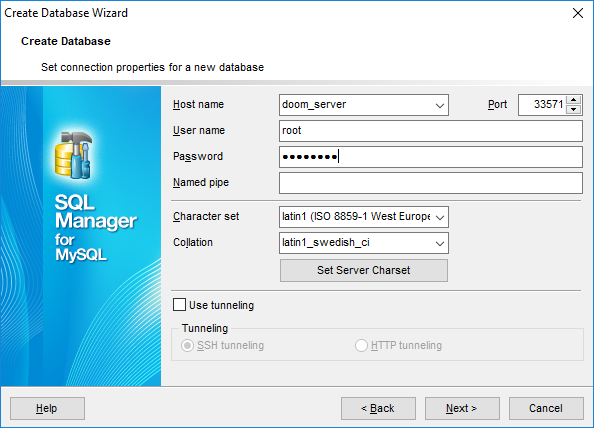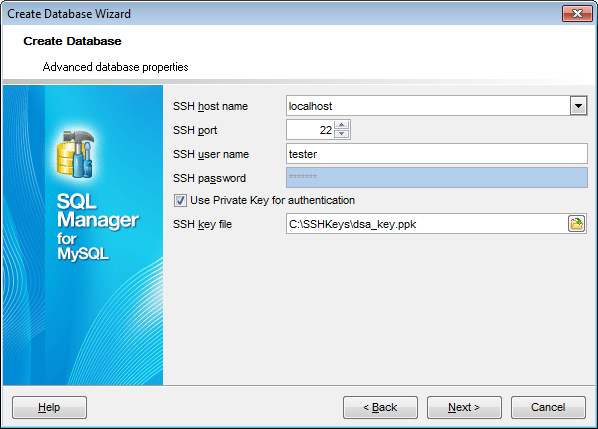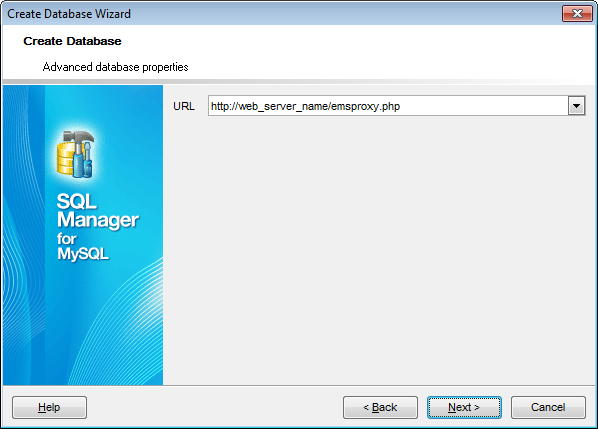Online Documentation for SQL Manager for MySQL
Setting connection properties
Use this step of the wizard to set the necessary connection parameters for the database being created. Use the corresponding boxes and options: Host name, Port, User name and Password.

Specify the host where the database being created will reside: type in the host name in the Host name field or select one in the drop-down list.
Enter MySQL port to connect through in the Port field and provide authorization settings: User name and Password. If needed you can define the Named pipe in case of local MySQL. The named pipe value is stored in the MySQL server configuration file and it is 'MySQL' by default. Please note that only name of named pipe can be used, not a full path. The Named pipe field can be also used to specify a Unix socket in case of using HTTP-tunneling on *nix platforms. Unix socket value should start with '/' (Unix path delimiter) and its value is '/tmp/mysql.sock' by default.
You can select the character set from the Character set drop-down list, and the collation for string data from the Collation drop-down list. These rules define the page encoding and sort order for string data that will be applied to new string fields by default.
Click Set server charset button to apply server settings for the database.
![]() Use tunneling
Use tunneling
If this option is checked, you should set tunneling parameters at the Specifying tunneling parameters step of the wizard.
![]() SSH tunneling
SSH tunneling
Select this option to establish connection to an intermediate SSH server and forward all MySQL commands through the secure tunnel. The next step of the wizard allows you to define the corresponding parameters for SSH tunneling.
![]() HTTP tunneling
HTTP tunneling
Select this option to access MySQL server through the HTTP protocol in case of Internet access through HTTP proxy only, or if the server does not allow direct connections to MySQL, but allows HTTP connections. The next step of the wizard allows you to define the corresponding parameters for HTTP tunneling.
SSH Tunneling parameters
Specify SSH Host name, SSH port, SSH user name, SSH password, the path to the SSH key file (if necessary) in the corresponding boxes.
See SSH connection properties for details.

HTTP Tunneling parameters
If you have selected HTTP tunneling, you need to upload the tunneling emsproxy.php script to the webserver and specify the URL in the corresponding box in the following format: http://webserver_address/emsproxy.php
See HTTP connection properties for details.

When you are done, click the Next button to view the result SQL statement.


































































